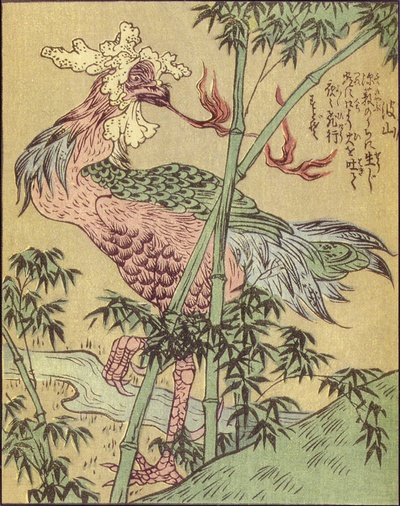Basabasa (婆娑婆娑)

Basan (波山), also known as Basabasa (婆娑婆娑) or Inuhōō (犬鳳凰), is a mythical bird from Japanese folklore, famously depicted in Takehara Shunsen’s Ehon Hyaku Monogatari and the Gazu Hyakki Yagyō.
Described as a large, chicken-like creature about the size of a turkey, the Basan is easily recognized by its vivid red comb and radiant plumage, which resembles flickering tongues of flame. Its most striking trait is the breath it emits—an eerie, cold fire or ghost flame that glows like a dragon's, yet generates no heat and cannot ignite anything it touches.
The Basan is a nocturnal creature said to dwell deep in the bamboo groves of the mountains in Iyo Province (伊予国), corresponding to modern-day Ehime Prefecture (愛媛県) on the Japanese island of Shikoku (四国). Although it avoids direct contact with humans, the Basan feeds on charred wood and embers, and may quietly roam remote villages at night in search of leftover bonfires or smoldering charcoal.
When startled or content, the Basan flaps its wings, producing a rustling or fluttering sound—“basa basa”—which gives the creature its nickname. According to legend, if someone hears this sound at night and looks outside, the Basan will instantly vanish from sight.
Visual depictions sometimes show the bird with a red body, blue hackles and claws, and green tail feathers, lending it an even more fantastical appearance. For this reason, it is occasionally referred to as the "Fire Rooster."
The Basan remains a vivid example of Japanese yokai lore—mysterious, otherworldly creatures that blur the line between natural and supernatural.